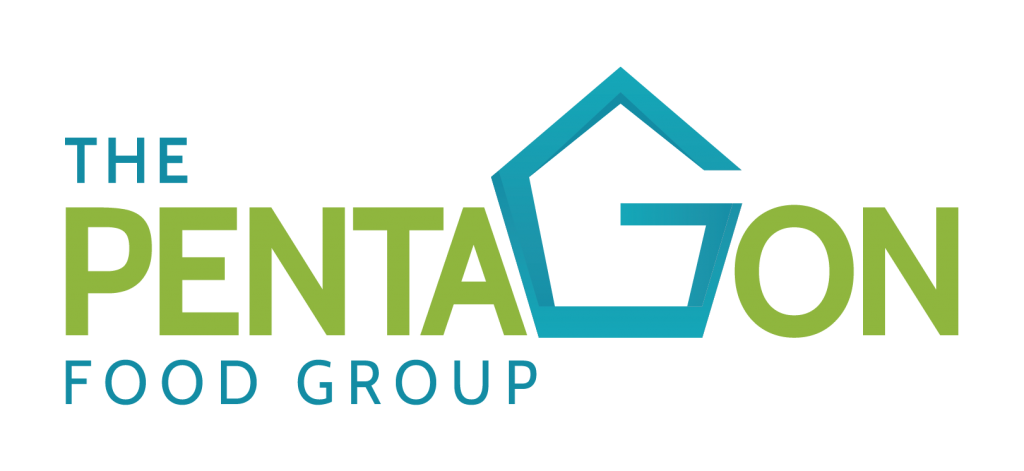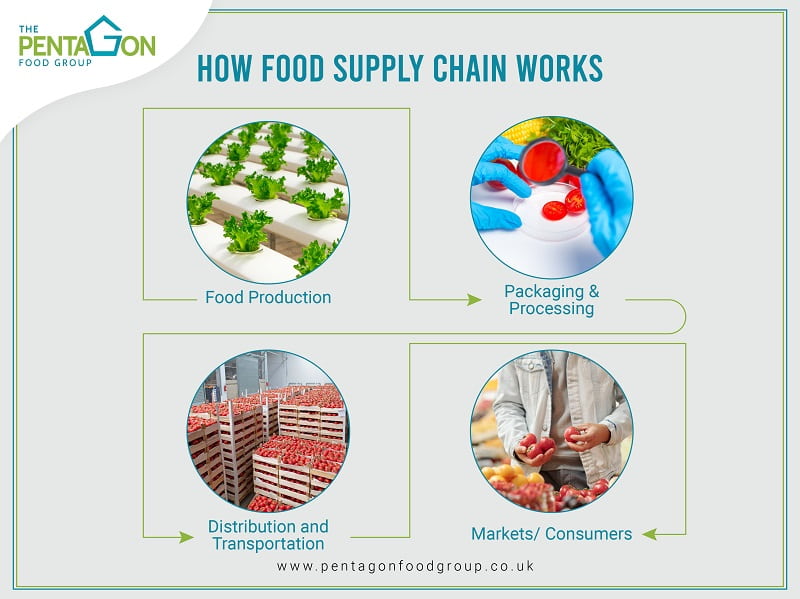The food supply chain is a system in which producers and suppliers, distributors, retailers, and shoppers interact with one another in the food retailing industry to transfer products from one party to another. It is employed in various forms all over the world. The main mission of food supply chain businesses is to make the lives of customers easier by providing them with the most innovative and reliable service in the industry so that they concentrate on what they do best – providing quality products to consumers.
One of the most important factors in the supply chain is stock management. Stock management refers to all the activities involved in making sure that the right quantity of each item is always stocked in each store. This involves many disciplines such as transportation, warehousing, inventory management, and logistics. Stocking management can be achieved through three approaches:
1. Pull strategy
2. Push strategy
3. Hybrid strategy
Table of Content
- How Does Food Supply Chain Works
- Food Supply Chain Management
- Food Supply Chain Problems
- Types of Food Supply Chain Companies
- Wholesale Food Suppliers in UK
- How Does Food Supply Chain Works
How Does Food Supply Chain Works
The food supply chain has several facets that work collaboratively to help food get onto shelves as quickly and efficiently as possible.
- The first part of the supply chain process involves suppliers loading raw products onto trucks. These goods are then shipped across the country to a central warehouse, where they are unloaded and sorted into large pallets by team members wearing protective gear.
- Once the goods reach the warehouse, they are sorted and placed on pallets for shipping. Truck drivers pick up these goods and make deliveries to local foodstores, passing through inspection before proceeding to the dock for unloading.
- Though technology improves each year, human labor is still a crucial part of this process. Workers lift boxes by hand and use forklifts for larger items, which are then transported via conveyor belts to the back of the store for stocking purposes.
- Food companies strive to improve efficiency throughout every step of their supply chain operations in order to save money. This is especially true when it comes to automation in warehouses, a process that helps reduce food spoilage and increase shelf life.
Food Supply Chain Management
The supply chain management of a food business is a series of processes that are repeated over time and work together to produce a final product, food store goods. They include the handling, storage, and selling of the goods to consumers. Goods pass from the company to company and from country to country through the supply chain until they reach their destination. Usually, the bulk of goods in the supply chain uses containerized transport, with smaller goods traveling overland or air.
The food supply chain is not as straightforward as it appears. For a food service business to receive products that are safe, of high quality and delivered in a timely manner, the supply chain must be efficient. Supply chain management is a process that begins with the delivery of raw materials from producers to manufacturers. The products then go through multiple layers of food wholesalers and distributors before finally reaching consumers at their local foodservice business.
The most important component of this supply chain is efficiency. There are several steps within the process that contribute to this efficiency. Because there are many players involved, each step must be carried out seamlessly with the next. A breakdown in one step often leads to inefficiencies later in the process, which negatively affects consumers who will ultimately pay more at the checkout stand due to increased prices.
The first step in the food supply is the procurement of raw materials by agriculture companies, such as farms and ranches. These companies grow crops and raise livestock for consumption. They sell these raw materials to food manufacturers, who then produce them into food products for consumers to purchase at their local store.
Food Supply Chain Problems
Food supply chain is complex, and problems are hard to avoid. For example,
- Produce deliveries may be late because of delivery delay.
- The inventory record may not match with actual stock on hand.
- The product on the shelf may be out of date.
This is not a comprehensive list, but it shows that problems could happen anywhere in the supply chain and affect many people along the way.
One of the main reasons why it is so difficult to avoid problems is that there are many parties involved in the food supply chain process.
Types of Food Supply Chain Companies
Food supply chain companies are just like all the other supply chain companies. They identify their suppliers and figure out how to get goods from those suppliers to their customers. For food supply chain companies, those goods are food.
There are three types of food supply chain companies:
- Producers– The producers grow the food and sell it to distributors and retailers. They can be small, family-owned farms or huge industrial complexes.
- Distributors– Distributors buy the food from the producers and then sell it to retailers. They often also do some processing or packaging of the food for sale to retailers.
- Takeaways and Retailers– Retailers, Takeaways and Cafes purchase frozen, chilled and ambient food types from distributors, process it if necessary, and then sell it directly to consumers.
Wholesale Food Suppliers in UK
Wholesale food suppliers in the UK supply food to many businesses. These businesses could be restaurants, bars, hotels, clubs, or even other food retailers. Food wholesalers are responsible for ensuring that the right products reach these businesses at the right time and in the right quantity.
Let’s take a look at some of the top 5 Wholesale Food Suppliers in UK:
- Booker
- Pentagon Food Group
- Makro
- Bestway
- Costco
Conclusion
Food supply chain is complex and has many different aspects that affect each other. There are issues such as consumer spending, food safety, food demand, and consumer pricing. All these issues must be addressed so that the food industry can continue to evolve and help our economy grow.
This industry has always been challenging for retailers and consumers. It is a highly competitive industry with a low margin for error. There is little room for price increases and if you sell the wrong product, it usually ends up getting thrown away.
Are you looking for a Free Consultation for Food Services Distribution? Click Here!






